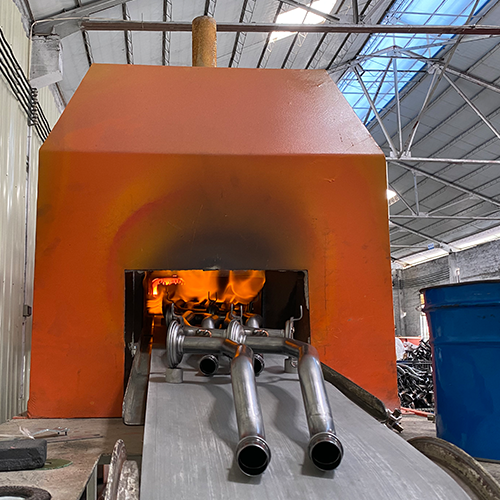Brazing Heat Treatment for Stainless Steel Automotive Exhaust Manifolds
Sep. 15, 2025
Elimination of Welding Stress
Generation of stress: During the brazing process, the exhaust manifold is locally heated to high temperatures and then cooled. Due to the varying degrees of thermal expansion and contraction among different parts of the material, internal stresses are generated in the weld seam and surrounding areas.
Impact of stress: If these internal stresses are not effectively eliminated, the exhaust manifold may deform during subsequent use due to stress release, affecting its connection and sealing performance with the engine and other exhaust components. This can even lead to cracking, resulting in exhaust gas leakage, which impacts automotive exhaust emissions and engine performance.
Role of heat treatment: Brazing heat treatment can enable the atoms within the material to rearrange through a reasonable heating and cooling process, eliminating or reducing internal stresses and ensuring the dimensional stability and structural integrity of the exhaust manifold.
Improvement of Weld Structure and Properties
Structural changes: During brazing, the weld metal undergoes melting and solidification, often resulting in a coarse and uneven structure. This can lead to unsatisfactory mechanical properties such as strength and hardness in the weld seam.
Property enhancement: Through brazing heat treatment, the weld metal can undergo structural changes such as recrystallization, refining the grains and making the structure more uniform. This improves the mechanical properties such as strength and toughness of the weld seam, enabling the exhaust manifold to exhibit better reliability and durability when subjected to complex loads such as engine vibrations and exhaust gas pressure.
Restoration of Corrosion Resistance
Corrosion risks: The corrosion resistance of stainless steel mainly depends on the chromium oxide protective film formed on its surface. During the brazing process, high temperatures may damage this protective film, causing chromium in the weld seam and heat-affected zone to form carbides with other elements, leading to a localized reduction in chromium content and the appearance of chromium-depleted zones.
Property restoration: Brazing heat treatment (such as solution treatment) can fully dissolve the carbides, allowing chromium to be uniformly redistributed and promoting the reformation of the chromium oxide protective film. This restores the corrosion resistance of the stainless steel exhaust manifold and extends its service life.
Optimization of Machinability
Machining requirements: The exhaust manifold may require subsequent machining processes during production, such as bending and flaring. If the weld seam has poor properties, problems such as cracking are prone to occur during machining.
Assistance from heat treatment: After brazing heat treatment, the machinability of the material is improved, and the weld seam exhibits better plasticity and toughness, enabling it to better adapt to subsequent machining processes and enhancing production efficiency and product quality.
The Necessity of Brazing Heat Treatment for Stainless Steel Automotive Exhaust Manifolds
Elimination of Residual Stress
Exhaust manifolds are constantly exposed to high-temperature and high-stress environments, and residual stresses generated during the brazing process may lead to cracking or deformation. For manifolds with complex structures and thin walls (such as manifold-type or close-coupled types), residual stresses are more sensitive to thermal and vibration loads, and heat treatment can significantly enhance their reliability.
Optimization of Structural Properties
After brazing, the weld seam and heat-affected zone may form coarse grains or non-equilibrium structures due to rapid cooling, resulting in high hardness and poor plasticity. Heat treatment (such as solution treatment) can refine the grains and improve joint properties, making them closer to those of the base material and meeting machining requirements such as pipe bending and flaring/necking.
Restoration of Corrosion Resistance
Stainless steel may experience a reduction in corrosion resistance during the brazing process due to chromium depletion. Heat treatment can fully dissolve carbides into the austenite, forming a uniform solid solution and thereby restoring corrosion resistance and extending the service life of the manifold.










